성경 번역 통해 재발견된 한글의 가치
한글 보급에 기여한 한글 성서
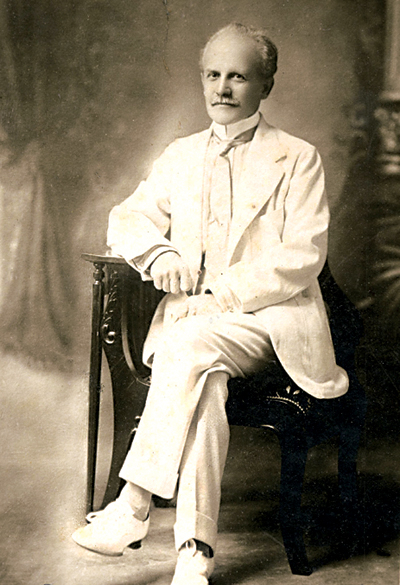
한글은 15세기 중반에 창제된 후 조선의 공식적인 문자로 채택됐지만 한글이 대중화되기까진 400년이 넘는 시간이 걸렸다.
오늘 날엔 전 세계가 한글의 과학성과 우수성을 인정하지만 당시 양반들은 한글을 “어리석은 백성들이 사용하는 천한 글”이라며 천시했고 한자 사용만을 고집했다. 당시 한글은 부녀자층을 통해서만 활용되고 있을 뿐이었다.
그러다 일제강점기(1910~1945)에 민족주의가 확산되면서 우리 말과 글에 대한 대중의 관심이 높아지게 된다. 그리고 이때 한글의 대중화의 중요한 기틀을 마련한 건 19세기 말 이역만리 조선 땅을 밟은 서양의 선교사들이었다.
그들 중 한 명인 호러스 그랜트 언더우드(1859-1916)는 한국의 첫 미국인 장로교 선교사로 1885년 26세의 나이에 조선에 첫발을 내디뎠다. 1882년 5월 조미수호통상조약이 체결된 지 3년이 지난 시점이었다.
성경 통해 재발견된 한글의 가치
언더우드를 비롯해 많은 초기 선교사들은 선교 활동을 위해서는 현지어로 된 성경이 꼭 필요하다 생각에 성경을 번역하고자 했지만, 한영 사전도 하나 없는 상황에서 성서 번역은 거의 불가능에 가까웠다.
이에 언더우드는 1997년 동료들과 '영구성경위원회(Permanent Executive Bible Committee)'를 창설해 위원장을 맡으며, 조선인들의 구어체에 가까운 언어로 성경을 번역하는 것을 목표로 성서 번역 사업에 매진했다.
그로부터 3년 뒤인 1980년, 언더우드는 우리나라 최초의 영한사전인 '영한자전(A Concise Dictionary of the Korean Language)'을 일본 요코하마의 한 인쇄소에서 출판했다. 560페이지에 달하는 이 사전은 한영과 영한의 두 부문으로 구성됐고 총 5,293개의 영어 단어가 수록된 것으로 알려졌다.
같은해 언더우드는 영한자전과 함께 한국어 기초 문법서인 '한영문법(An Introduction to the Korean Spoken Language)'도 펴냈다. 총 425 페이지의 이 영문 문법서는 한국어의 음운론, 형태론 등을 소개하며 이후 한글 연구와 발전에 크게 기여했다.
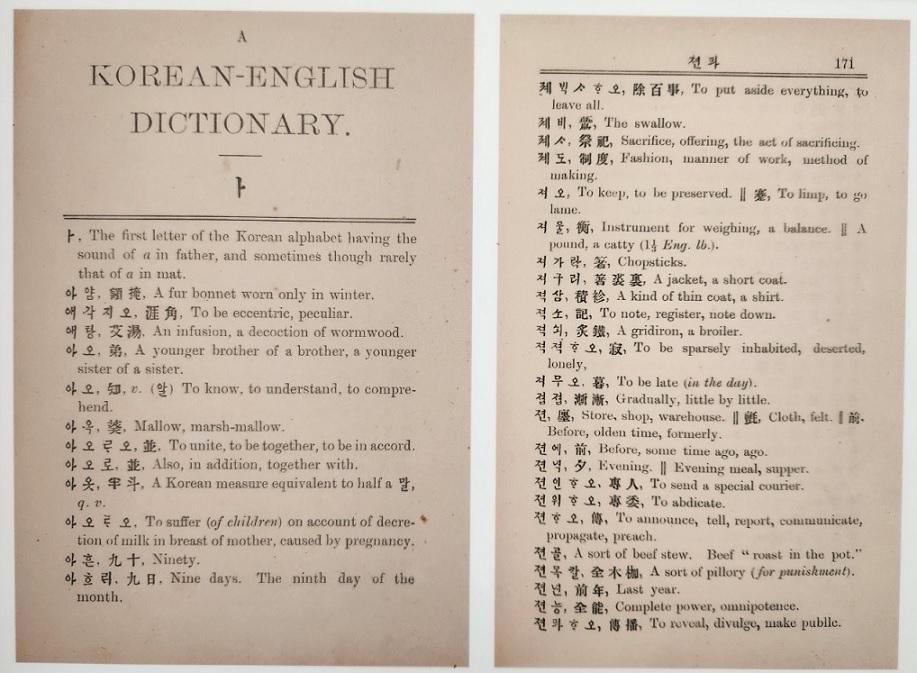
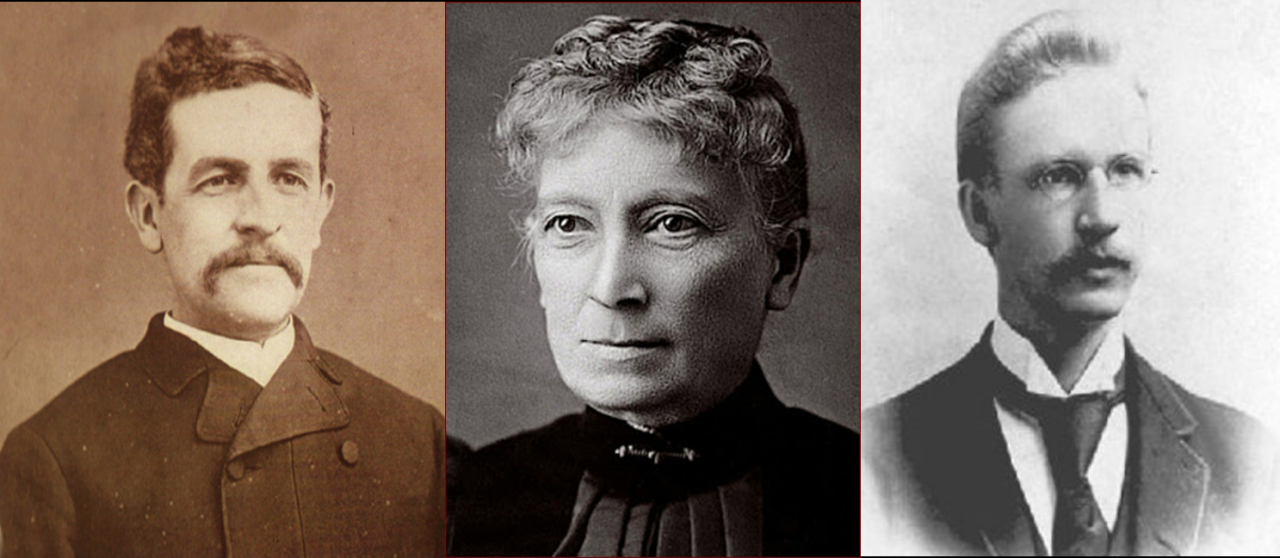
한영 사전과 한국어 문법서의 출판으로 성경 번역을 위한 토대를 마련한 후 1893년 드디어 본격적인 한글 성경을 위한 번역 작업이 시작됐다. 언더우드와 미국 선교사인 헨리 지 아펜젤러(1858-1902), 메리 플레처 스크랜튼(1832-1909) 등 영구성경위원회 구성원들은 조선인 기독교도들과 협력하여 신약 성경 번역에 착수했다.
마침내 1900년, 국내 최초의 한국어 신약 성경인 “신약젼셔”가 출판됐고 이는 이후 미국 선교사 윌리엄 데이비스 레이놀즈(1867-1951)가 주도한 구약 성경 번역 작업으로 이어졌다. 1911년 한국어 구약인 “구약젼셔”가 발간되면서 성경 전체를 한글로 읽을 수 있게 되었다. 한국어로 된 구약과 신약 전체 성경은 여러 번의 개정을 통해 1937년에 완성됐다.
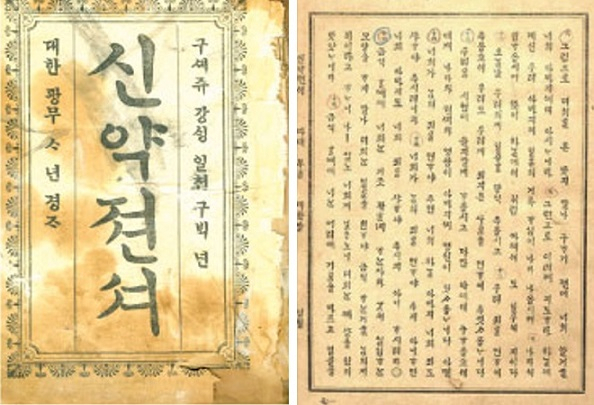
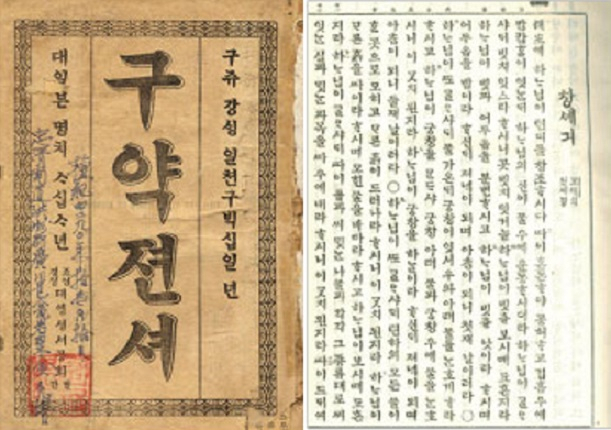
성경으로 글 깨우친 백성들
당시 한국어 성경은 한글을 배우지 못한 여성과 하층민에게 훌륭한 우리말 교과서가 돼 주었고 조선의 문맹률을 퇴치하는 데 상당한 공헌을 한 것으로 평가된다.
연세대학교 신학대학원 교수인 하경진 교수는 최근 코리아헤럴드 인터뷰에서 "초기 선교사들이 오랜 시간 노력 끝에 만든 한글 성경은 교회와 개인 선교사들이 한글 수업과 과외를 통해 교육 선교 활동을 하는 데 널리 사용되면서 조선시대 한글 보급에 큰 기여를 했다"고 전했다.
또, 그는 “기독교 신앙과 상관없이 많은 조선인들이 한글을 배우기 위해 성경을 읽었으며 이들이 배운 것을 가족이나 이웃과 지식을 나누기도 했다”고 덧붙였다.
아울러 선교사들의 한글 교육을 통한 복음 전파는 이후 한국어의 언어학적 연구의 중요한 동력이 됐다.
예컨대 우리말을 뜻하는 단어로 “한글”을 처음 쓰기 시작한 국어학자 선구자 주시경 선생은 1894년 배재고등학교(현 배재대학교)에 입학해 한국어 연구에 몰두했다. 배제재고등학교는 1885년 미국 선교사 애펜젤러가 설립한 한국 최초의 근대식 중등사립학교다.
주시경 선생은 1908년에 창립된 한글학회의 창립자이자 일제강점기에 한글 보존을 위해 헌신한 인물로 알려져 있습니다. 그는 1910년 “국어문법”을 출판했는데 이는 국어의 문법 및 특징을 기술한 최초의 현대어 문법서였다.
하 교수는 "한국어 성경의 보급은 많은 언어학자와 학생들이 표준화된 언어 원칙을 연구하도록 동기를 부여했고 한글학회가 1933년에 표준화된 한글 철자를 제정하도록 이끌었다"고 전했다.
선교사들의 한글 선생님
1880년대 후반 조선에는 한글을 배울 수 있는 학교와 교재가 없었다. 이런 상황에서 서양의 선교사들은 어떻게 조선어를 배웠을까?
그들 곁엔 숨은 조력자였던 조선인 선생님들이 있었다.
대한기독교역사연구소에 따르면 언더우드는 당시 프랑스 신부들에게 한국어를 가르쳤던 가톨릭 신도 송덕조씨로부터 한국어를 배웠다.
1년 공부 끝에 언더우드의 한국어 실력은 한국어로 설교할 정도의 수준에 이르렀다. 그는 한국어 말하기 실력을 더욱 향상시키기 위해 거리나 온천에서 처음 보는 한국인들과 대화하며 복음을 전한 것으로 알려졌다.
아펜젤러의 한국어 교사는 중국 문학을 공부했던 가톨릭 신도 조한규씨였다. 종교적 차이가 있음에도 불구하고 조한규씨는 아펜젤러의 선교 활동을 도왔고 그가 동료들과 한국어로 성서 번역을 완성하는 데 기여했다.
한편 1888년 12월에 조선에 도착한 캐나다 선교사 제임스 게일은 한국 사회의 일원이 되는 것이 한국어를 배우는 가장 빠른 방법이라고 생각했다. 서울에서 동료 외국인 선교사들과 함께 살았던 그는 외국인을 찾아볼 수 없는 황해도 소래로 이동해 현지 주민들 사이에 녹아 들기 위해 노력했다. 그곳에서 게일은 유학자 이창직씨를 만났고 이씨는 그의 한국어 선생님이 되어 주었다.
[원문]
[Hello Hangeul] Western missionaries did not just spread the gospel, they spread Hangeul
Although Hangeul was created and adopted as the official writing system in mid-15th century, it took nearly 400 years for it to become widely used by the general public. Chinese script was still prevalent, as the ruling elites rejected King Sejong’s invention as a vulgar language of the underclass people.
In the late 19th century and during the 1910-1945 Japanese colonial rule of Korea, interest in Hangeul was renewed on the back of growing nationalist sentiments, and it was Western Christian missionaries who played a crucial role in laying the foundation for the widespread adoption of Hangeul.
Among them was American Horace G. Underwood, the first ordained Presbyterian missionary to come to Korea. He arrived in Korea in 1885, three years after the Joseon Dynasty signed the Treaty of Peace, Amity, Commerce and Navigation with the US, which marked the beginning of diplomatic relations between Korea and a Western state.
The Bible project
In order to spread the gospel, Underwood and other early missionaries realized the importance of having the Bible translated into the local language. But it was a tall task, as there were no Korean dictionaries available at that time.
In 1887, the Permanent Executive Bible Committee was launched with a vision of rendering the Bible in the plain, spoken language of Koreans. Underwood served as its chair.
Three years later, he published the nation’s first Korean-English dictionary, titled “A Concise Dictionary of the Korean Language,” at a printing house in Yokohama, Japan. A total of 5,293 English words were included in the 560-page dictionary consisting of two parts -- Korean to English and English to Korean.
The year 1890 also saw the publication of the first Korean grammar book, also by Underwood. At 425 pages, “An Introduction to the Korean Spoken Language" introduced the phonology and morphology of Korean to English-speaking learners.
In 1893, the work finally began to translate the Bible. Underwood and other members of the committee, including American missionaries Henry G. Appenzeller and Mary Fletcher Scranton, teamed up with Korean Christians to translate the New Testament first.
The nation’s first Korean New Testament came out seven years later in 1900 and it served as the impetus for the translation of the Old Testament, a work led by American missionary William Davis Reynolds which lasted for more than a decade until the eventual printing in 1911 of the Korean Old Testament.
The complete Bible, consisting of both the Old and New Testaments, written in the Korean language came out in 1937, after years of corrections and revisions, ready to evangelize Koreans through their everyday language.
Literate commoners
The newly published Korean Bible became a great Hangeul textbook for the uneducated lower class and women in Joseon who could barely read and write the language, improving literacy among common people, according to local theology experts.
Professor Huh Kyung-jin of Yonsei University’s graduate school of theology said “the Korean language Bible had greatly contributed to the popularization of Hangeul in Joseon as it was widely used by churches and individual missionaries to promote a literacy campaign through language classes and private tutors.”
Regardless of whether they accepted the Christian faith, many Koreans read the Bible to learn the Korean alphabet and shared their knowledge with family or neighbors, he added.
Evangelism through Korean language education also laid a cornerstone for later linguistic research on the Korean native script.
For instance, Ju Si-gyeong, one of the founders of modern Korean linguistics, who coined the term Hangeul, enrolled in Pai Chai University in 1894 and delved into the study of the Korean language. Established in 1885 by Appenzeller, the university was the first modernized education institute in the nation.
As the founder of the Korean Language Society launched in 1908, Ju devoted his life to the fight to preserve Hangeul during the Japanese colonial era, when the use of the Korean language was suppressed. In 1910, he published a grammar book, written in Korean, that consolidates the modern-day usage of the Korean language.
“The introduction of the Korean Bible motivated many linguists and students to develop standardized language principles which led to the establishment of a standardized Korean orthography by the Korean Language Society in 1933,” Huh said.
Teachers for the early missionaries
How did foreign missionary pioneers living in Joseon in the late 1880s acquire the local language without schools or books available? They had great private tutors, according to the Institute of the History of Christianity in Korea.
Records show that Underwood studied with a Catholic man named Song Deok-jo who taught Korean to French priests in those days.
After a year of intensive study, the American missionary is said to have reached a level in which he could give sermons in Korean. To further improve his speaking skills, Underwood went out to the streets or mineral springs to communicate with Koreans and preach the gospel.
Appenzeller’s Korean teacher was Jo Han-kyu, a Catholic man who studied Chinese literature. Despite the religious differences, Jo later assisted the missionary with the Korean translation of the Bible.
For James Scarth Gale, a Canadian missionary who came to Korea in December 1888, being part of a Korean community seemed like the fastest way to learn Korean.
After living among foreign missionaries in Seoul for a couple of months, he headed north to Sorae in Hwanghae Province, now part of North Korea, where there were hardly any foreigners and he immersed himself completely among the local people. There, he met a Confucian scholar Lee Chang-jik, who later became his Korean teacher.
By Choi Jae-hee (cjh@heraldcorp.com)







![[KH Explains] Hyundai's full hybrid edge to pay off amid slow transition to pure EVs](http://res.heraldm.com/phpwas/restmb_idxmake.php?idx=644&simg=/content/image/2024/04/18/20240418050645_0.jpg&u=20240419100350)





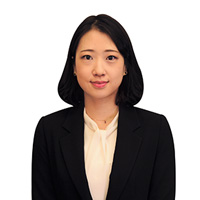

![[From the Scene] Monks, Buddhists hail return of remains of Buddhas](http://res.heraldm.com/phpwas/restmb_idxmake.php?idx=652&simg=/content/image/2024/04/19/20240419050617_0.jpg&u=20240419175937)

![[KH Explains] Hyundai's full hybrid edge to pay off amid slow transition to pure EVs](http://res.heraldm.com/phpwas/restmb_idxmake.php?idx=652&simg=/content/image/2024/04/18/20240418050645_0.jpg&u=20240419100350)

![[Today’s K-pop] Illit drops debut single remix](http://res.heraldm.com/phpwas/restmb_idxmake.php?idx=642&simg=/content/image/2024/04/19/20240419050612_0.jpg&u=)